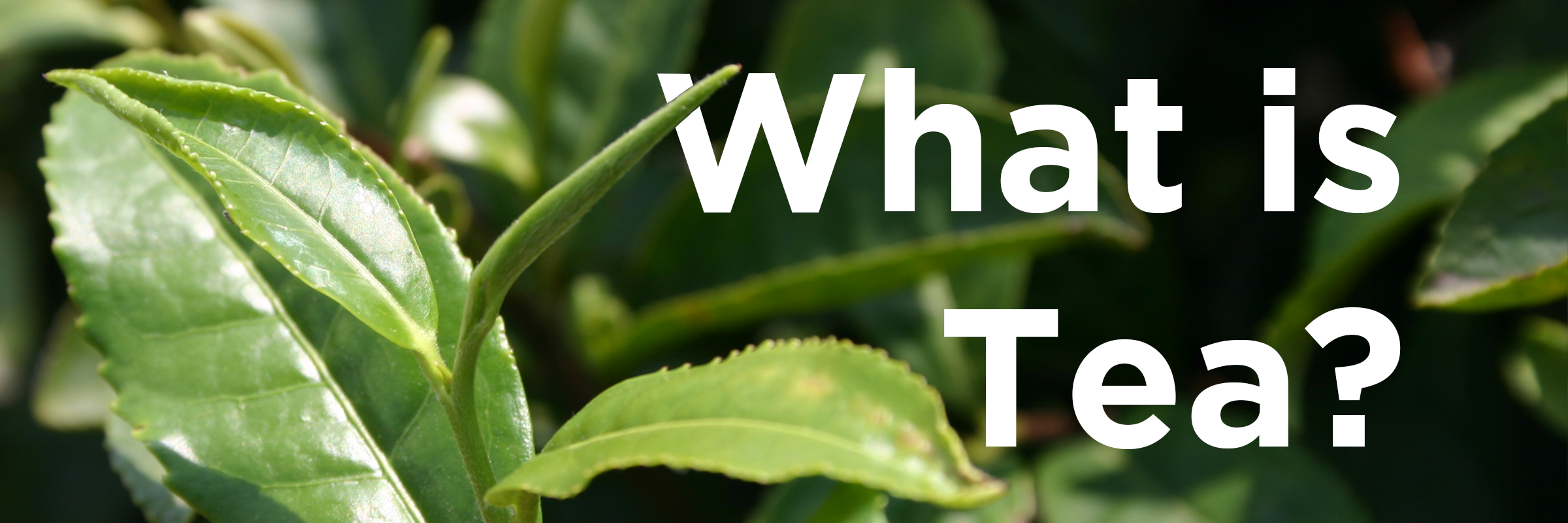What is Tea? - The Culture of Tea - Part 1
The Tea Plant
Have you every wondered how so many types of tea can come from one plant? There are black teas, green teas, and even aged teas. The almost endless combination of; varieties and varietals, geographic location, elevation grown, season of harvest, oxidation level, and processing techniques all play a factor into the brew in your cup. In this new series, “The Culture of Tea” we will explore the plant and it’s impact on cultures all across the world.
There are two main varieties of Camellia sinensis used in tea production. A variety describes varying characteristics within a subspecies; this is distinct from the non taxonomic term “varietal” used to describe teas of a certain characteristic, often geographically based or referring to the harvest of a specific garden. The first variety is Camellia sinensis var. sinensis. It originates from China where it has been cultivated and studied for thousands of years. The leaves are small and narrow, making them well suited for variable, harsh climates. The second variety is Camellia sinensis var. assamica which is native to Assam, India. The first saplings of this variety were found in 1824 by Robert Bruce and Maniram Dewan in Assam. These leaves are large and flat, adapted to the tropical, monsoon-heavy climates of India and Sri Lanka. These two varieties are now grown in many places across the world, creating a wide range of flavor and nuance to explore along with a plethora of cultural traditions and practices.
How Are Tea Leaves Processed?
There are two ways of processing tea leaves, the traditional or orthodox method, and the Cut, Tear, and Roll, or CTC method.
Orthodox
Withering: The leaves are laid out immediately after harvesting to allow some of the moisture to escape, leaving the leaves pliable and workable. Air may be gently passed over the leaves to accelerate this step.
Rolling: This process breaks apart the cell walls exposing the compounds to oxygen in the air, accelerating the oxidation process. This step was traditionally, and in some cases still is, done by hand, though, in contemporary settings machines may be used to roll and toss the leaves into a needle like shape.
Oxidation: This step determines the colors and types of tea. The leaves are allowed to darken according to the teamaker’s desired outcome. This affects the flavors, aroma, and strength of the final product.
Fixing/Drying: Oxidation is halted by applying heat. This can be done by toasting the leaves in a large wok, passing the leaves through hot air dryers, steaming the leaves, and other methods of heating and drying.
CTC
CTC teas go through the same steps as orthodox teas but include a machining process after the withering step. The machine cuts, tears, and curls the leaves to allow for greater weights to be packaged in smaller containers. The increased surface area has made CTC teas perfect for tea bags and sachets.
Withering
Freshly harvested leaves are laid out on large tarps allowing a small amount of moisture to escape.
Fixing
Leaves are tossed in a hot, wok-like pan to fix the leaves, halting oxidation.
Types of Tea
In contemporary western markets we typically find six types of tea. These are black, oolong, green, white, puerh, and herbal. While these classifications make discussion more simple, they may not always fully portray the nuance of different varietals. Classifications of red tea can be found in Yunnan teas from China, and yellow teas in Huangya tea from Anhui province.
Black Tea
Black is the most commonly consumed type of tea globally, used in blends and recipes across the world. These leaves are allowed to fully oxidize, giving them a dark brown/blackish color. The flavors are more bold and full bodied, with notes of malt, cocoa, raisin, smokiness, and nuttiness.
Oolong Tea
Oolong is arguably the most artisan tea, with a wide range of flavors and styles unique to the tea makers who produce them. The majority comes from China and Taiwan, offering many nuanced varietals. These fine teas can resemble both green teas (if oxidized lightly) or black teas (if oxidized heavily). Flavors can range from fresh, grassy umami to rich, bold, nuttiness.
Green Tea
Greens are the most popular in China and Japan. Green tea does not undergo the same oxidation process that black and oolongs go through. Once the leaves are harvested they are quickly fixed with heat to prevent oxidation and preserve color and flavor. Fresh, grassy umami flavors can often be found in these selections.
White Tea
These are the freshest and most delicate of all of the types. White teas are not rolled or oxidized. Once harvested, the leaves are left to briefly whither; they may be exposed to some heat to quicken drying and halt oxidation. Whites are often fresh and full of terroir with a touch of fruity and floral notes.
Puerh Tea
Puerh is a distinct category of aged tea. Almost any type of tea can be made into puerh, including green and white. There are two types of puerh, sheng and shou. Sheng puerh are aged naturally, while shou puerhs undergo a fermentation or “cooking” process to impart a similar flavor profile. This style originates from Yunnan province, China where the techniques have been practiced and refined over thousands of years. Compressed leaves were once used as currency across the Silk Road, where the aged puerh teas developed their unique characteristics through the need for transportation and preservation.
Herbal Tea
Any brewable plant that is not Camellia sinensis is considered an herbal tea. Many of these plants brew a non-caffeinated tea, but not all herbals are free of caffeine (some popular herbs like yerba mate do contain a considerable amount of caffeine). Ginseng and guarana are also considered to be herbal tea ingredients. Herbs from all around the world can be combined for their health benefits, energizing properties, and enjoyable flavors.









